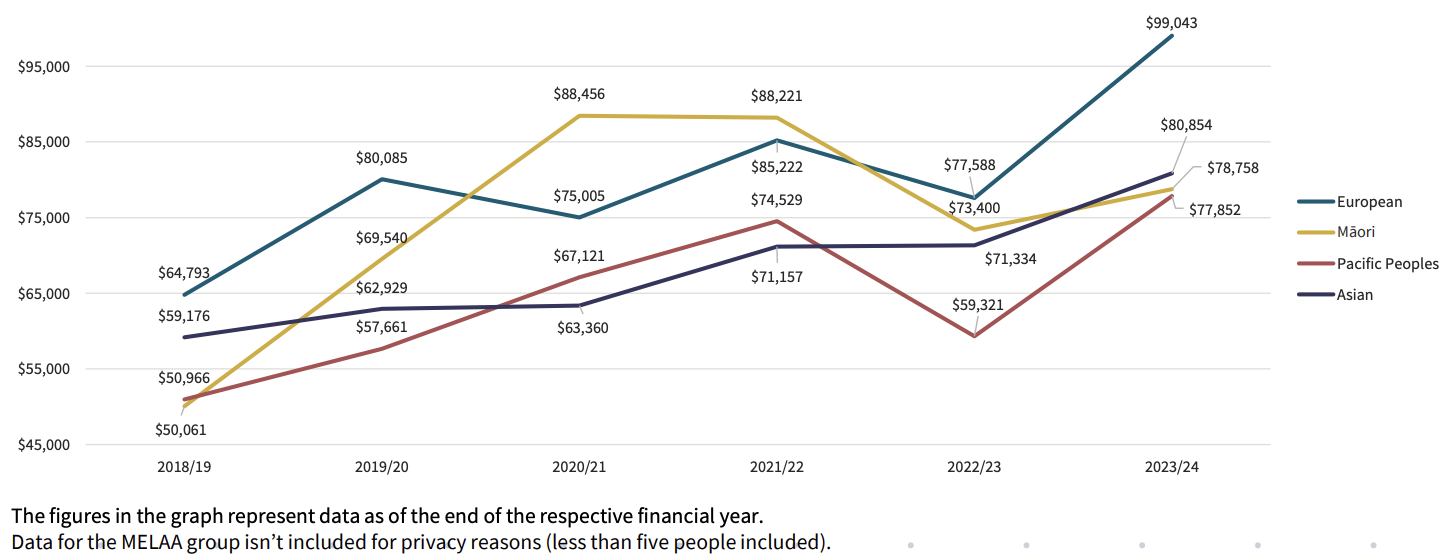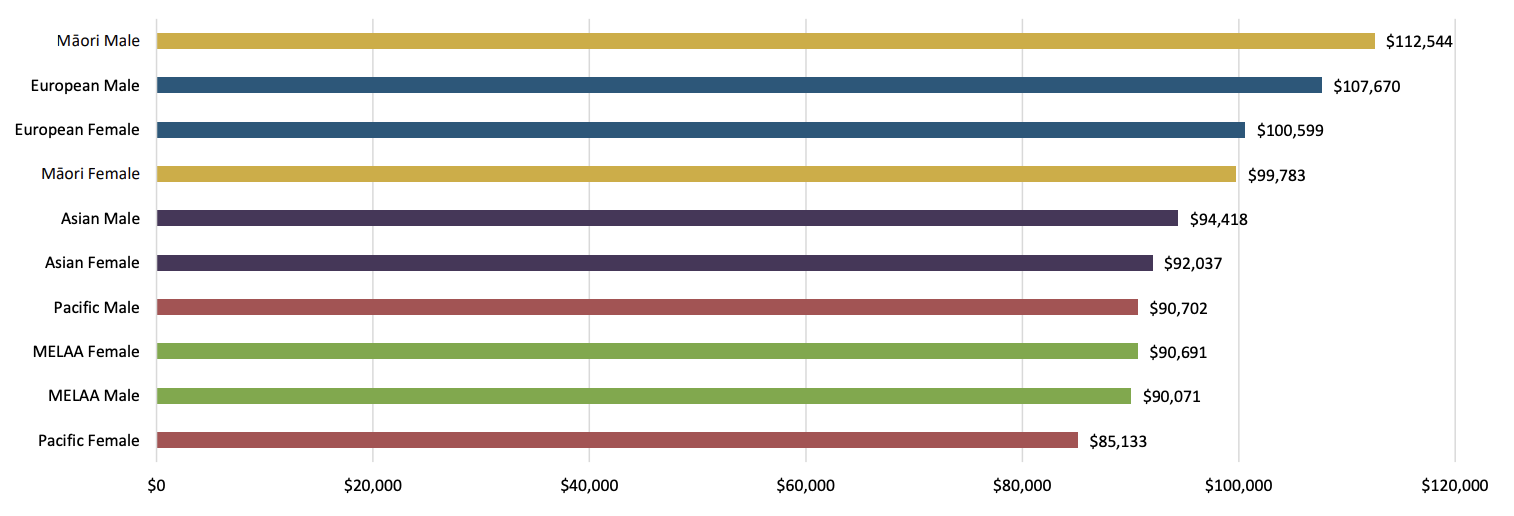
Ethnic starting pay gaps also emerge in Stats NZ's latest DEI report

The difference in starting salaries between male and female employees at Stats NZ has reached a five-year high, according to the agency's latest Diversity, Equity, and Inclusion (DEI) report.
Stats NZ reported that its starting salaries for male employees reached $99,410 for the year 2023-24, while women only earned $88,996.
"The gap between average starting salaries for males and average starting salaries for females is $10,414.00, the largest it has been in the five years shown here," the DEI report stated.

Source: Stats NZ's DEI report
But the gap in starting salaries isn't limited to gender, as the report also uncovered the "largest gap recorded" in terms of ethnicity.
European employees were paid a starting salary of $99,043, according to the report, with a significant gap from employees of other ethnicities including:
"While the European group has earned the highest starting salaries for four out of the six dates shown, 2023/24 represents the largest gap recorded," the report stated.
"The difference between our European kaimahi average starting salary and our Asian kaimahi starting salary (the next highest) was $18,189.00."

Source: Stats NZ's DEI report
According to the report, Māori men were paid the highest average salary by gender and ethnicity.
Māori men were paid $112,544, up by nearly $5,000 compared to the second-highest group, European men, who were paid $107,670.
The highest-paid group of women were European women, who earned $100,599.
On the other hand, the lowest-paid group were Pacific women, who earned an average pay of $85,133, according to the report.

Source: Stats NZ's DEI report
Despite these gaps, the report noted that Stats NZ has made "significant efforts to reduce like-for-like pay gaps."
This includes reducing like-for-like gender pay gaps to 0% in some areas.
However, the report noted that organisation-wide gender and ethnic pay gaps remain.
"These gaps are largely driven by representation, where key groups are more concentrated in lower pay bands," the report stated. "Unconscious bias, often influenced by stereotypes, plays a role in how these patterns emerge in the data."